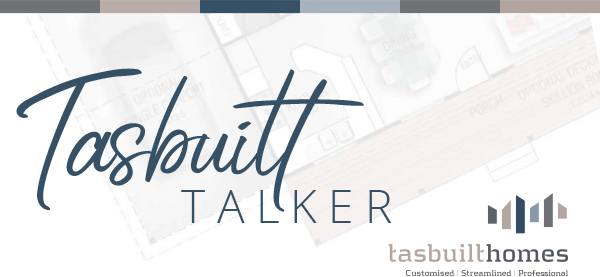Receive your free commercial brochure Request Now
Insulation 101: There is no need to live in a Glorified Tent
“Glorified Tent” is a term used for Australian house structures because our general lack of regard for insulation is a legacy of living on a continent of warm weather where airflow and big windows are the norms. However, weather conditions are vastly contrasting depending on exactly where you live.
Let’s face it, we all want to make our home as comfortable as possible so when it comes to building your home there are ways to ensure it will be comfortable from the inside out before you’re even living in it!
Insulation comes in different types and different ratings that are suitable for the wide range of conditions here in Tasmania. The ideal insulation will keep the temperature cool during hot summers and warm during icy winters. Insulation is also a great way of reducing your energy use and preventing excess noise in the home, especially if you live in a busy location or main road.
Here is our guide to insulation and why Tasbuilt Homes prefers some options over others.
Energy Efficiency
The National Construction Code (NCC) sets out a number of conditions under the Energy Efficiency Requirements of the Building Code as to the minimum insulation requirements needed for any type of building.
Insulation Ratings - R value
All insulation options are given an R-value. This is a measure of the insulation resistance to heat flow, also known as thermal resistance. The higher the R-value, the greater the resistance to heat transfer, and the greater the insulating effect and subsequent energy savings. Total R-values are also calculated to determine the thermal performance of the system as a whole. Total R-values take into consideration the R-values of other building materials in the application, as well as other factors such as reflective airspaces.
Sound Proofing
Most thermal insulation materials usually provide soundproofing to some extent, but if you are building on a noisy main road then you might need to add an extra layer. This additional layer or specialised insulation material can act as a barrier to limit excessive noise pollution in your home.
Thermal Bridging
A thermal bridge is a weakness in the material that encloses your building. It is the path of least resistance where heat can be transferred through the building materials that make up your building’s envelope. Thermal bridging can occur in the breaks of a building’s thermal envelope and can be reduced by effectively insulating problem areas to reduce the occurrence and increase the energy efficiency and thermal performance of your building.
Types of Insulation
Insulation has come a long way from itchy batts shoved in your ceiling cavity. There is now a wide variety of options for all types of applications, each with its unique pros and cons. The below points are a quick overview of some of the most common types of insulation and why Tasbuilt Homes chooses them in our builds.
1. Polystyrene
Polystyrene foam is made through pockets of air fused together and is a 100% recycled product. Tasbuilt uses this for insulating floors because of its high performance, thin profile, fibre-free and non-allergenic, acts as a vapour barrier and is rodent and water-resistant and unaffected by moisture. With a recycling plant about to be built 100 metres down the road from Tasbuilt, the benefit is further enhanced
2. PIR Board
PIR Board is a high-performance, fibre-free rigid urethane resin insulation core. It is CFC/HCFC-free with zero Ozone Depletion Potential (ODP, is strong and is an effective vapour barrier. Its common name is Polyisocyanurate, and it provides the lowest thermal conductivity of any insulation (a staggering 0.20) on the insulation market today. Tasbuilt offers this installation as a premium floor insulation with 50 mm having an R-value of 2.5 compared to the highest rating in Australia of R-2.7.
3. Fibreglass (Glasswool)
Fibreglass batts are made of spun, molten glass fibres bonded with resin. For wall insulation, Tasbuilt Homes uses low-density batts that are easy to cut and fit and are non-combustible, rather than the combustible high-density batts.
4. Rock Mineral Fibre
Rock Mineral Fibre is made of spun molten rock fibres bonded with resin. It is non-combustible and great for soundproofing however the fibre absorbs moisture, is highly allergenic and is difficult to install.

Tasbuilt Homes Solution
Tasbuilt insulates floors with polystyrene, fibreglass batts in the ceiling and R-2.5 batts in the stud wall. A breathable wrap is applied over the external surface of the structural ply, followed by a 10-millimetre batten, and another 10mm batten is applied over the wrap to provide ventilation. All windows are sealed externally with foil tape and this tape continues down to the structural base to remove any moisture that may develop externally, (eg condensation, wind-driven rain etc). The result is a very well-sealed and insulated external wall.
In order to get the most benefit from insulation. it is important that a holistic approach is taken to address heat gain through windows, skylights and other penetrations. Shutters, deciduous trees and internal fixtures such as blinds or curtains can be used to reduce heat gain and loss, in combination with appropriate and thorough insulation.
Discuss your specific insulation needs with a Tasbuilt Sales Consultant in the design stage to ensure your new home stays comfortable all year round!

